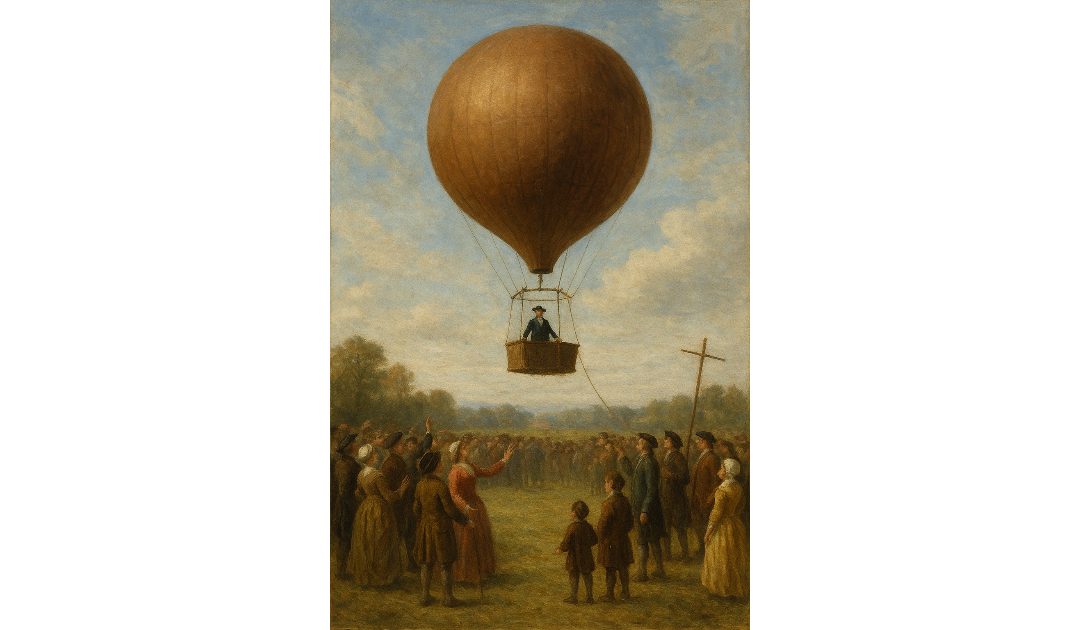I have posted about my interest in aviation, and I proposed to Claire in a hot air balloon, so I am drawn to balloons for today’s post. On the 15th of October, 1783, the Montgolfier brothers’ hot air balloon made the first tethered ascent with humans aboard, piloted by Jean-François Pilâtre de Rozier.
The Montgolfier brothers, Joseph-Michel (1740-1810) and Jacques-etienne (1745-1799), were pioneering French inventors celebrated for developing the first successful hot air balloon. Born in Annonay, France, into a family of paper manufacturers, their curiosity and inventive spirit were nurtured from an early age.
Their fascination with flight stemmed from observing how heated air caused embers to rise. This observation led them to experiment with lightweight materials and heated air. By 1782, they had crafted a small, unmanned balloon made from silk and paper, which rose impressively upon the application of heat.
On the 4th of June, 1783, the brothers demonstrated their invention in Annonay with a larger hot air balloon. It ascended to an estimated 1,800 metres, astonishing onlookers. This success garnered royal attention, prompting another demonstration at the Palace of Versailles on the 19th of September, 1783. This time, the balloon carried a sheep, a duck, and a rooster. The animals landed safely, proving the viability of human flight.
Jean-François Pilâtre de Rozier was a pioneering French aeronaut and physicist, renowned for his significant contributions to the early development of hot air ballooning. Born on the 30th of March, 1754, in Metz, France, Pilâtre de Rozier initially pursued studies in physics and chemistry, eventually becoming a physics teacher and curator at the King’s physics cabinet in Paris.
His fascination with flight led him to collaborate with the Montgolfier brothers, inventors of the hot air balloon. On the 21st of November, 1783, Pilâtre de Rozier, alongside François Laurent d’Arlandes, made history by completing the first manned free flight in a hot air balloon. The flight took place over Paris, covering approximately 9 kilometres in about 25 minutes, soaring to an altitude of around 900 metres. This remarkable achievement marked the dawn of human flight and cemented Pilâtre de Rozier’s place in the annals of aviation history.
Driven by an adventurous spirit and scientific curiosity, Pilâtre de Rozier continued to experiment with flight. He designed a hybrid balloon, known as a “Rozier balloon,” which combined hot air and hydrogen gas. Tragically, during an ambitious attempt to cross the English Channel on the 15th of June, 1785, this innovative craft caught fire in mid-air, leading to the fatal crash that claimed his life. He thus became aviation’s first recorded fatality.

